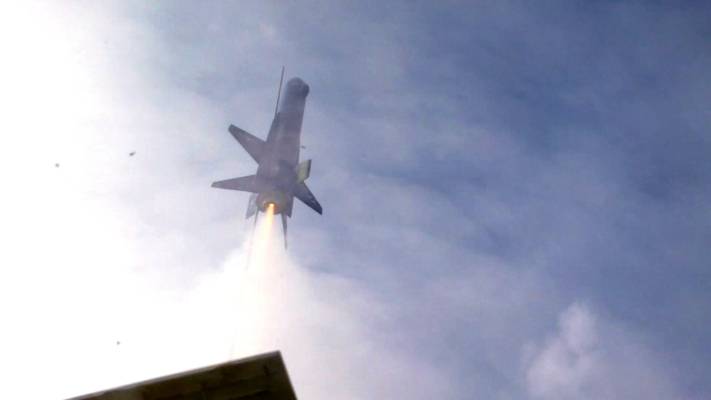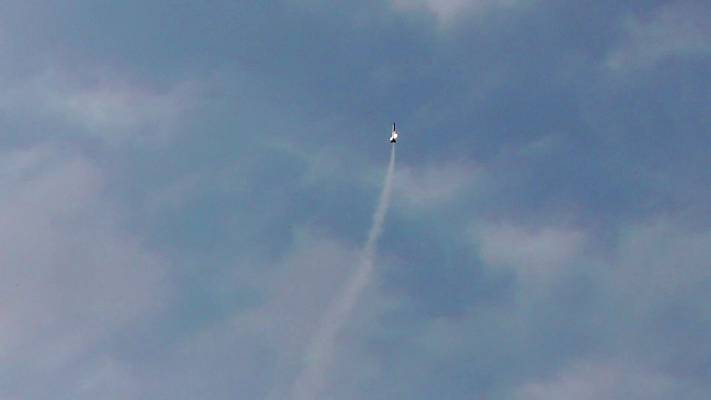The X-15: This is a "Sport-Scale" (not true scale) model of the famous X-15 rocket-powered research plane. This particular kit appears to be newer than other Quest X-15 kits described here: It is a few inches longer, and a recommendation by Quest to only use the A8-3 or A6 motors. (Mine is definitely too heavy to fly on an A8). I chose to paint my particular model gloss blue (not the historically accurate black).
My kit came out pretty heavy as I used a full-sized can of Rustoleum 2X paint trying to get a smooth, glossy finish. Apparently light coats of this paint leave the finish in something like an orange-peel texture, cool but not good for low drag. I discovered heavy, thick coats that would run with normal paints made for a smoother, glossy finish. But by then, there was so much primer and paint on this model that it almost doubled the weight of this kit. In MHO, Rustoleum 2X (from Home Depot) sucks for flying models. I wish I would have used the ridiculously expensive yet lighter Testors stuff at $5 for a tiny 3-oz. can.
The X-15 finally got a payload section addition. This adds another 3 inches to the rockets overall length. This will hold the Altimeter Two, which no longer is at risk of ejection shock damage or loss if the clip fails. The added bulkhead, painted payload tube and padding only adds an additional 13.6 grams of weight to this model.
She flies well and is not affected by the wind much, though I wish I could get her to venture a little closer to the clouds. Actual measurements with an altimeter on board shows this model can go much higher than I estimated, with a C6-3 it reached 437 feet, and traveled at 89 mph. That's enough to have it fly higher than the Great Pyramid of Giza, now that it has eroded about 25 feet.
| Flight Date: | 2012-04-01 |
| Rocket Name: | X-15 |
| Kit Name: | Quest - X-15 {Kit} (2014) |
| Flyer's Name: | Rich DeAngelis |
| Motors: | C6-5 |
| Launch Site: | Penn Manor School Lancaster PA |
| Actual Altitude: | 336 Feet |
I was getting very disappointed with the performance of my parachutes, having 2 successes, 2 partial, and 4 unopened or destroyed chutes today, but I hoped loosely packing a 14" chute in a 35mm tube would be easy, and the X-15 handles gusty winds as well as anything I have. I chose the C6-5 because from experience a B6-2 was not nearly enough delay for this model, and I could expect about 400 feet, plenty of time to open the chute in the air.
I ignited the C6 which burned for about 2 seconds. It accelerated at a peak of 5.2 Gs, and averaged 1.8 for the burn. During this time the model slowly rolled and wavered in the gusty winds aloft as told by the wavy smoke trail, but it remained going up during the boost phase. This pushed the model to 87 mph as expected and then coasted for 3.1 seconds to an altitude of 336 feet, less than expected.
During the coast phase it turned rapidly and suprisingly DOWNwind while still moving very fast. As it started down it lost 57 feet and the upper winds took it far downwind before the slightly late ejection occurred 2.1 seconds later at 279 feet. The parachute opened well but again not completely and the model descended at a somewhat fast 17 mph. It landed safely without damage several hundred yards downwind after a flight time of 18.1 seconds. I call this a successful flight.
| Stage | Motor(s) |
|---|---|
| 1 | Estes C6-5 |
 |
 |

